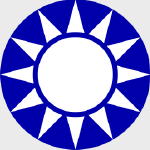Hobby Master HA9203 Chinese Air Force Curtiss 81-A-2 (P-40B) Warhawk Fighter - "White 47", Ft. Leader Robert "R. T." Smith, 3rd Pursuit Squadron, Kunming, China, June 1942 (1:48 Scale)
"Flying is hours and hours of boredom sprinkled with a few seconds of sheer terror."
- Greg "Pappy" Boyington
 The P-40 was the best known Curtiss-Wright designed airplane of the Second World War. It was also one of the most controversial fighters, vilified by many as being too slow, lacking in maneuverability, having too low a climbing rate, and being largely obsolescent by contemporary standards even before it went into production. The inadequacies of the P-40 were even the subject of a Congressional investigation after the War ended.
The P-40 was the best known Curtiss-Wright designed airplane of the Second World War. It was also one of the most controversial fighters, vilified by many as being too slow, lacking in maneuverability, having too low a climbing rate, and being largely obsolescent by contemporary standards even before it went into production. The inadequacies of the P-40 were even the subject of a Congressional investigation after the War ended.
While these criticisms were certainly valid, it is also true that the P-40 served its country well, especially in China and Burma, during the opening phase of the War in the Pacific when little else was available to the US Army Air Corps. Along with the P-39 Airacobra, the P-40 was the only American fighter available in quantity to confront the Japanese advance until more modern aircraft could be delivered to frontline squadrons.
Pictured here is a 1:48 replica of a Chinese Air Force Curtiss 81-A-2 (P-40B) Warhawk fighter that was piloted by Ft. Leader Robert "R. T." Smith, who was attached to the 3rd Pursuit Squadron, then deployed to Kunming, China, during June 1942.
Sold Out!
Dimensions:
Wingspan: 9-1/4-inches
Length: 7-3/4-inches
Release Date: August 2019
 Historical Account: "Defying Goliath" - The Republic of China Air Force (ROCAF) was formed by the Kuomintang after the establishment of the Aviation Ministry in 1920. As tensions mounted between China and Imperial Japan in the 1930s, a number of smaller Chinese warlord airforce men (including Guangdong Provincial Air Force) and equipment became integrated into the ROCAF in a centralized effort to counter Imperial Japanese military ambitions.
Historical Account: "Defying Goliath" - The Republic of China Air Force (ROCAF) was formed by the Kuomintang after the establishment of the Aviation Ministry in 1920. As tensions mounted between China and Imperial Japan in the 1930s, a number of smaller Chinese warlord airforce men (including Guangdong Provincial Air Force) and equipment became integrated into the ROCAF in a centralized effort to counter Imperial Japanese military ambitions.
During the Second Sino-Japanese War (1937-1945), the ROCAF participated in attacks on Japanese warships on the eastern front and along the Yangtze river and interdiction and close-air support during the Battle of Shanghai in 1937. The initially Chinese front line fighter aircraft were mainly Curtiss Hawk IIs and IIIs and Boeing P-26Cs. These engaged Japanese fighters in many major air battles beginning on August 14th, 1937, when Imperial Japanese Navy warplanes raided Chienchiao airbase; "814" has thus become known as "Air Force Day". Chinese Boeing P-26/281 fighters engaged Japanese Mitsubishi A5M fighters in the world's first dogfight between all-metal monoplane fighters. A unique mission in April 1938 saw two Chinese Martin B-10 bombers fly a mission over Japan, dropping only anti-war leaflets over the Japanese cities of Nagasaki and Saga. It was a war of attrition for the Chinese pilots, as many of their most experienced ace fighter pilots, such as Lieutenant Liu Tsui-Kang and Colonel Kao Chih-Hang, were lost. Six months into the war, which is considered the beginning of World War II in Asia, the Chinese Air Force inventory of frontline American Hawk IIs and IIIss and P-26Cs were superseded by faster and better armed Polikarpov I-15s and I-16s as support from the Soviet Union grew and American support faded.
Through attrition and loss of their most experienced fighter pilots in the first half of the Second Sino-Japanese War, the Republic of China Air Force ultimately suffered irreversible losses in combat against the Japanese, and by the beginning of 1942 the ROCAF was practically annihilated by Japanese aircraft, particularly with the introduction of the Mitsubishi A6M Zero. The ROCAF was eventually supplemented with the establishment of the American Volunteer Group (known as the "Flying Tigers") with heavily armed and armored Curtiss P-40 Warhawks, and subsequently rebuilt each year following Imperial Japan's attack on Pearl Harbor with new aid and vigor from the United States.






